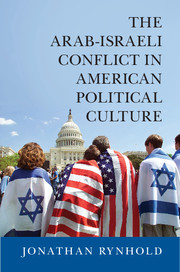Book contents
- Frontmatter
- Dedication
- Contents
- Acknowledgments
- Introduction
- 1 Like U.S.: American Identification with Israel
- Part I Party and Ideology
- Part II Protestants
- Part III Jews
- 6 American Jewish Attachment to Israel: Mind the Gap
- 7 American Jews and the Peace Process: Divided We Stand?
- Conclusion
- Notes
- Bibliography
- Index
6 - American Jewish Attachment to Israel: Mind the Gap
Published online by Cambridge University Press: 05 February 2015
- Frontmatter
- Dedication
- Contents
- Acknowledgments
- Introduction
- 1 Like U.S.: American Identification with Israel
- Part I Party and Ideology
- Part II Protestants
- Part III Jews
- 6 American Jewish Attachment to Israel: Mind the Gap
- 7 American Jews and the Peace Process: Divided We Stand?
- Conclusion
- Notes
- Bibliography
- Index
Summary
We Are One.
—campaign slogan of the United Jewish Appeal, 1967There exists a distance and detachment between young American Jews and their Israeli cousins that … has not existed until now.
—Frank Luntz, Israel in the Age of Eminem (2003)Introduction
For many years a deep attachment to Israel united American Jewry. After 1967, Israel achieved a heroic status and many Jews thought that not supporting Israel was “a great, if not the greatest ‘crime’ that could be committed by a Jew.” To this day American Jews’ attachment to Israel remains deeper than the widespread sympathy for Israel expressed by the general public. However, since the late 1980s, an increasing number of voices have argued that American Jews have become more distant from Israel.
This chapter argues that while American Jews no longer view Israel through rose-tinted glasses, a large majority continue to feel attached to the Jewish state. Yet, there is a clear attachment gap that mirrors the wider polarization within the community between those with a more intense sense of belonging to the Jewish people and greater Jewish communal involvement, and those with a weaker sense of belonging and a lesser degree of involvement. The Orthodox are most strongly represented at the pole of strong attachment, while the intermarried and the unaffiliated are dominant at the other pole. In the middle are Jews from the Reform and Conservative movements.
- Type
- Chapter
- Information
- The Arab-Israeli Conflict in American Political Culture , pp. 139 - 158Publisher: Cambridge University PressPrint publication year: 2015

